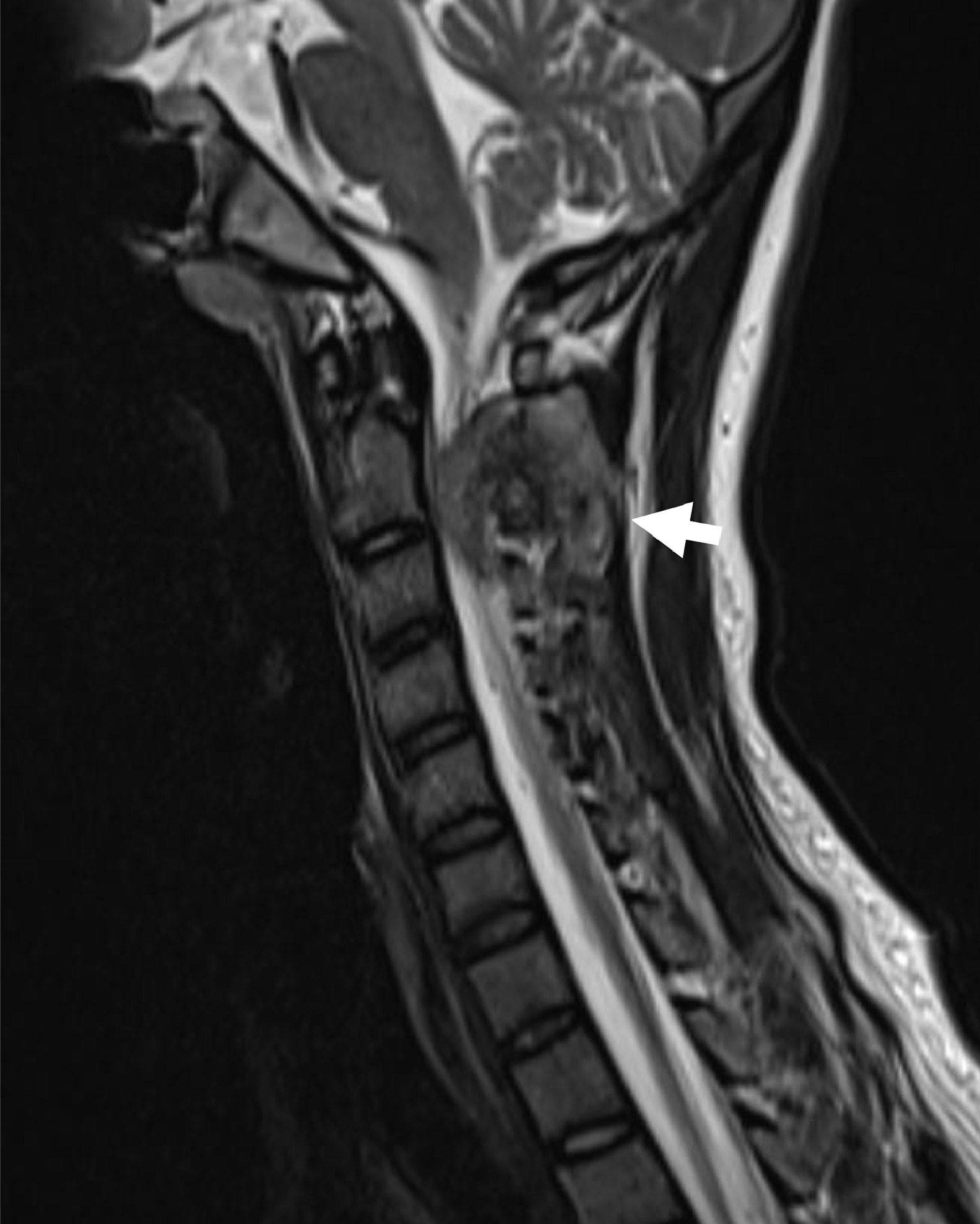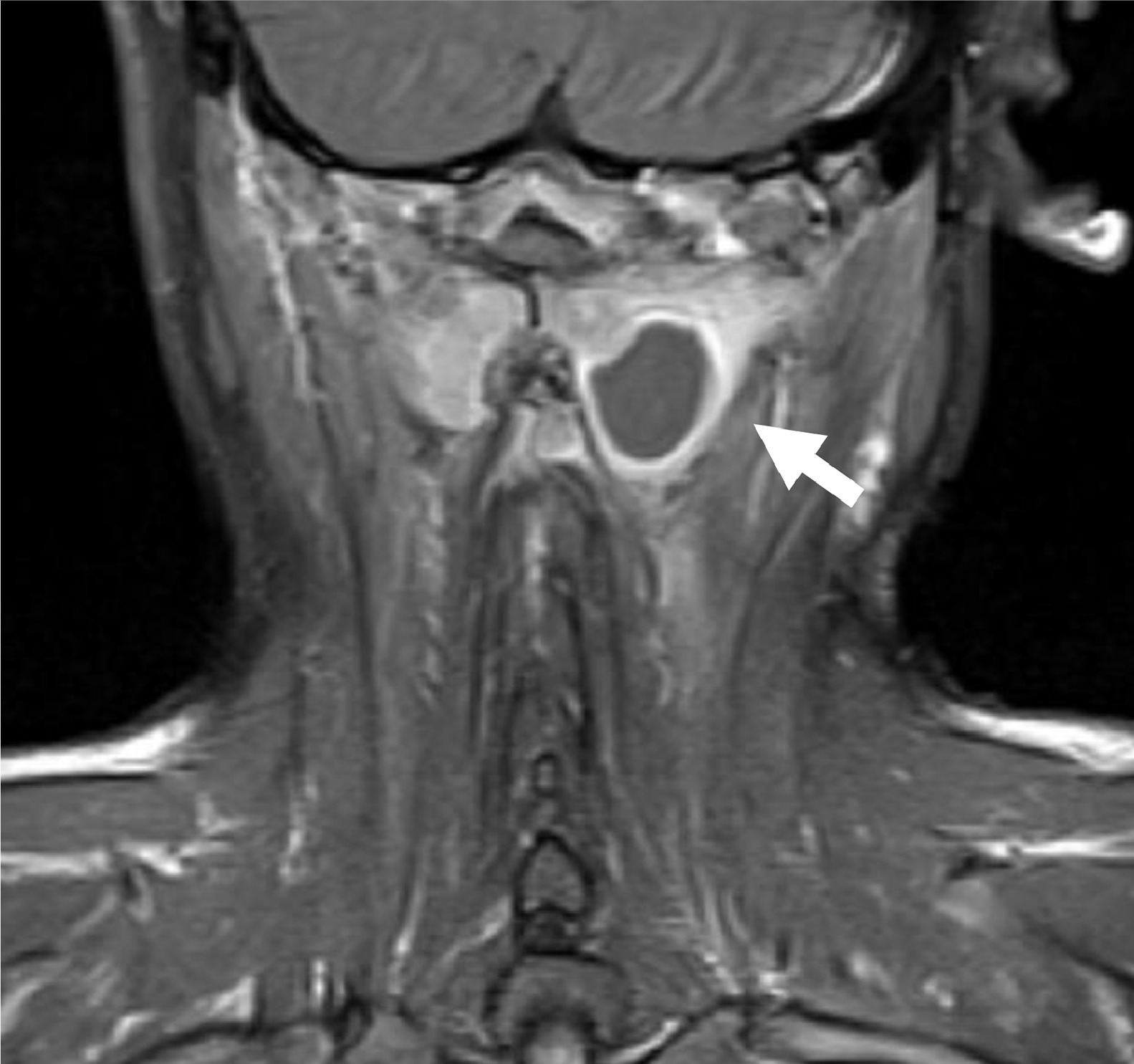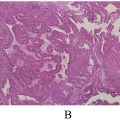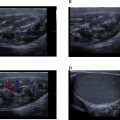Abstract
Ewing’s sarcoma itself is an uncommon disease. But its occurrence as a primary extraosseous cervical lesion is extremely rare. Considering the rarity of the manifestation of this disease in the form of a soft tissue mass in the neck, and the occurrence with nonspecific initial symptoms, this study introduces a patient whose only initial symptom was neck pain. The patient was a 23-year-old man who had been suffering from neck pain for ten days. Due to neck pain and 1 episode of urinary incontinence, the patient was hospitalized and examined. In the first 6 hours after admission, the patient experienced weakness of the upper limbs. A round lesion was seen in the alignment of the second vertebra with dimensions of 7 × 6 cm. Due to the progression of clinical symptoms, especially in the upper limbs, emergency surgery was planned for the patient. The diagnosis was Ewing’s carcinoma. Tumoral cells were seen in diffuse form in small size with large nuclei, hyperchromatic and high N/C with large areas of necrosis. In conclusion, the urgency of surgical intervention in extraosseous Ewing sarcoma cannot be overstated, and it is essential for healthcare providers to remain vigilant in recognizing the signs of this aggressive disease to facilitate timely and effective treatment.
Introduction
Ewing’s sarcoma itself is an uncommon disease. But its occurrence as a primary extraosseous cervical lesion is extremely rare [ ]. Ewing’s sarcoma is a cancer that arises in the bones or soft tissue surrounding them, commonly beginning in the lower limb bones, though it can occur in any bone in the body [ ]. Manifestations of Ewing’s sarcoma are usually related to the site of involvement, and this cancer does not have specific symptoms [ ]. Symptoms include bone pain, fever, fatigue, and weight loss. Due to the fact that this disease does not have specific symptoms, it is not diagnosed in time in many patients [ ]. Diagnosis generally involves imaging studies like X-rays, MRIs, or CT scans to visualize the tumor and evaluate its extent. A definitive diagnosis is typically confirmed via a biopsy, which examines a tumor sample histologically [ ]. Considering the rarity of the manifestation of this disease in the form of a soft tissue mass in the neck, and the occurrence with nonspecific initial symptoms, this study introduces a patient whose only initial symptom was neck pain.
Case
The patient was a 23-year-old man who had been suffering from neck pain for ten days. The patient’s pain worsens when bending the neck. The patient’s pain had been wrongly treated for 7 days with the diagnosis of muscle cramps. He had no other symptoms in those ten days. At the end of the tenth day, the patient experienced urinary incontinence.
Due to neck pain and 1 episode of urinary incontinence, the patient was hospitalized and examined. In the first 6 hours after admission, the patient experienced weakness of the upper limbs. Based on clinical suspicion, an MRI of the patient’s cervical spine was performed. In the MRI performed, a round lesion was seen in the alignment of the 2nd vertebra with dimensions of 7 × 6 cm. MRI images are shown in Figs. 1–3 . An extradural mass was observed at the C2 and C3 vertebral bodies on the cervical spine MRI, extending from the bilateral C1-C2 neural foramina to the paravertebral spaces. This mass had caused spinal cord compression and edema, along with invasion of the posterior elements of the C2 vertebra.



Stay updated, free articles. Join our Telegram channel

Full access? Get Clinical Tree








